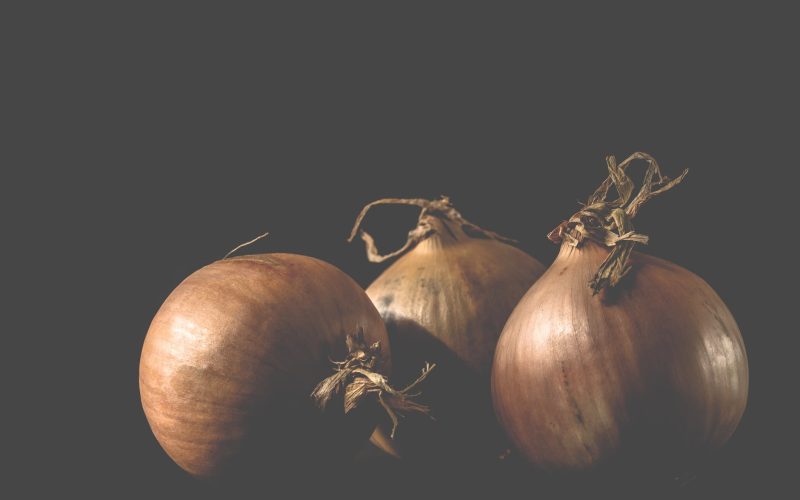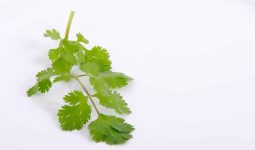Onions are more than just a kitchen staple that makes us cry. These layered vegetables have a fascinating history dating back thousands of years and offer surprising benefits beyond adding flavor to our meals.
Onions have been part of human diets for over 7,000 years and contain powerful compounds that provide numerous health benefits while requiring very few calories.
From ancient civilizations to modern kitchens, onions have maintained their importance across cultures and cuisines worldwide.
Whether yellow, red, or white, these versatile vegetables hold secrets and stories that might surprise even the most dedicated food enthusiasts.
Get ready to discover some eye-opening facts about this everyday ingredient that might change how you view the humble onion forever.
1. Onions date back over 7,000 years, with evidence from 5000 B.C.
Onions have been part of human history for an incredibly long time! These flavorful vegetables have been around since the Bronze Age, making them one of our oldest cultivated crops.
Archaeologists have discovered traces of onions dating back to 5000 BC.
That’s over 7,000 years of humans growing and eating these layered vegetables!
The oldest known onion harvest dates to around 5,000 BC. This amazing discovery helps us understand how important onions were to ancient civilizations.
Most researchers believe that onions have been cultivated for 5000 years or more.
Since onions grew wild in various regions, ancient people probably gathered and ate them even before they started farming them.
2. The largest onion ever grown weighed nearly 11 pounds in England
Onions can grow to surprising sizes in the right conditions.
According to the Guinness Book of World Records, the largest onion ever grown weighed a whopping 10 pounds 14 ounces.
This massive vegetable was grown by V. Throup from Silsden, England.
Just imagine holding an onion heavier than a gallon of milk! This record-breaking onion would be enough to flavor dozens of meals or make countless onion rings.
However, records are meant to be broken. In more recent years, Tony Glover grew an even more eye-watering 18lb 11oz onion that reportedly entered the record books. That’s heavier than many newborn babies!
Another massive onion weighing 8.97 kg (19lb 12.4oz) was unveiled at the Harrogate Autumn Flower Show in North Yorkshire. This monster vegetable weighed more than a bowling ball!
Growing giant onions takes special skill, patience, and the perfect combination of soil, sunlight, and care.
3. Onions come in three common colors: yellow, red, and white.
Onions add flavor to our meals and come in three main colors that you can find at most grocery stores.
Each color has its own special qualities and best uses in cooking. Yellow onions are the most popular type in the United States.
They have a yellow-brown papery skin on the outside and white flesh inside.
These onions have a strong flavor that becomes sweet when cooked, making them perfect for soups and stews.
Red onions stand out with their beautiful purple-red skin. They tend to be milder and sweeter than yellow onions, which makes them great for eating raw in salads and sandwiches.
Their color comes from special plant compounds called anthocyanins.
White onions have a crisp, clean look with their paper-white skin.
They have a sharper taste when raw but become milder when cooked. Many Mexican dishes use white onions for their clean flavor.
Interestingly, Americans are eating more onions than before. The National Onion Association reports that U.S. onion consumption has increased by 50% in the last 20 years!
4. Ancient Egyptians worshiped onions for their circular layers, symbolizing eternity
The ancient Egyptians had a special relationship with onions. They worshiped onions because they believed their round shape and concentric rings were powerful symbols of eternal life.
Onions weren’t just food for the Egyptians – they were sacred objects! The circular layers inside each onion represented the never-ending cycles of life and the universe.
This meaningful symbolism made onions important in their religious practices.
Egyptian pharaohs were often buried with onions in their tombs.
Archaeologists have discovered onions placed near mummies and inside burial chambers to help guide the dead to the afterlife.
The Egyptians even used onions to cover tombs as part of their funeral rituals.
These humble vegetables played a starring role in ceremonies honoring the dead and celebrating eternal life.
5. Onions contain vitamin C, fiber, and minerals like potassium and calcium
Onions aren’t just tasty—they’re packed with nutrients too! These flavorful bulbs contain decent amounts of several vitamins and minerals, making them a healthy addition to your meals.
One medium onion provides about 8.14 mg of vitamin C, an important antioxidant that helps protect your cells and supports your immune system. That’s a nice boost for such a low-calorie food!
Fiber is another great benefit of onions. With nearly 2 grams of fiber per onion, they help keep your digestive system running smoothly while making you feel fuller longer.
When it comes to minerals, onions really shine! They’re a great source of potassium, providing about 161 mg per serving. Potassium helps with muscle function and keeps you hydrated.
Onions also contain manganese, which supports bone health and tissue development. You’ll even get a little calcium and iron with each serving!
The best part? Onions are considered nutrient-dense, meaning they provide lots of nutritional value while being low in calories. Just 44 calories per medium onion!
6. Onions are part of the allium family, related to garlic, leeks, and scallions.
Onions belong to the Allium family, a group of vegetables known for their distinctive aromas and flavors.
The name “Allium” comes from the Latin word for garlic, showing how important these plants have been throughout history.
This flavorful family includes six main members: onions, garlic, shallots, leeks, chives, and spring onions (also called green onions or scallions).
Each has its own unique taste profile, but they all share similar growth patterns and chemical compounds.
All members of the Allium family are known for their aromatic scent that can make cooks teary-eyed! These vegetables release sulfur compounds when cut, which gives them their distinctive smell and flavor.
Chefs consider alliums the foundation of countless dishes worldwide.
When sautéed, these vegetables develop a wonderful sweetness that enhances almost any recipe.
They’re like the behind-the-scenes heroes of the culinary world!
7. A Single Serving of Onion Has About 45 Calories, Making It a Low-Cal Food
Onions aren’t just flavorful – they’re also incredibly light on calories! One medium onion contains just 45 calories, making it an excellent choice for anyone watching their calorie intake.
When you compare onions to other foods, they really shine as a low-calorie option.
Raw onions are very low in calories, with only 40 calories per 3.5 ounces (100 grams).
This makes them perfect for adding tons of flavor without adding many calories to your meals.
The low calorie count is partly because onions are 89% water. They also contain about 9% carbs and very little fat, which explains why they’re so light on the calorie scale.
Americans seem to love their onions despite (or because of) their low-calorie nature.
The average American eats almost 18.8 pounds of fresh and storage-type onions every year. That’s a lot of flavor for very few calories!
8. Onions have been mentioned in the Bible, highlighting their historical importance
Onions have a special place in ancient history, even earning a mention in the Bible! The Israelites remembered onions as one of the foods they ate during their time in Egypt, showing just how long humans have been enjoying this flavorful veggie.
According to the Bible, onions were part of the Israelites’ diet during their Egyptian captivity.
The ancient Egyptians had a fascinating relationship with onions.
They actually worshipped the onion and believed its spherical shape and concentric rings symbolized eternity! That’s quite an honor for a humble vegetable.
Egyptian pharaohs were so fond of onions that they were buried with them.
Archaeologists have found onions in Egyptian tombs, showing their cultural and religious significance.
Onions are also among the oldest known foods in human history.
Their mention in such an ancient and important text as the Bible demonstrates just how integral they’ve been to human civilization throughout the ages.
9. Onions can actually be used as a natural leather polish!
Did you know that onions aren’t just for cooking? They can help make your leather items shine! The natural acids in onion juice work well to clean and polish leather surfaces.
To use onions as a leather polish, just cut one in half and rub the cut side straight onto your leather stuff.
The juice helps get rid of dirt while adding a bit of shine to boots, bags, or even an old armchair.
This natural cleaning method has been around for ages. Onion juice can help remove rust and tarnish from metal, too, which is handy for things with both leather and metal parts.
After polishing with an onion, grab a clean cloth and wipe away any leftover juice. The smell? It disappears before you know it.
This trick works especially well on leather shoes and boots. The natural compounds in onions help restore the leather’s appearance without harsh chemicals found in commercial polishes.
So, next time you’re reaching for a fancy leather cleaner, maybe just try an onion instead. Can’t hurt to experiment, right?
10. Cutting onions releases sulfur compounds that make you tear up
Ever wonder why chopping onions makes you cry? You’re definitely not alone—almost everyone gets hit with those stinging tears.
The culprit? When you chop into an onion, you’re basically breaking open its cells and letting out some pretty sneaky compounds.
Onions pull sulfur from the soil as they grow. When you slice one open, enzymes that were kept apart suddenly mix with sulfur-rich amino acids, and that’s when things get interesting—new, eye-watering compounds are formed.
The main offender is a gas called propanethial S-oxide. This irritating gas drifts right up to your eyes and makes your tear glands kick into overdrive.
Your eyes start watering to flush out the irritant—honestly, it’s a pretty clever defense mechanism, even if it’s annoying in the middle of dinner prep.
If you’re desperate to dodge the tears, you could chill your onion first, grab a really sharp knife to do less damage, or even pop on some goggles (no shame).
Some folks swear by cutting onions under running water to help wash away those sulfuric gases before they hit your eyes. Worth a shot, right?









really a great article about onion most benefits are new